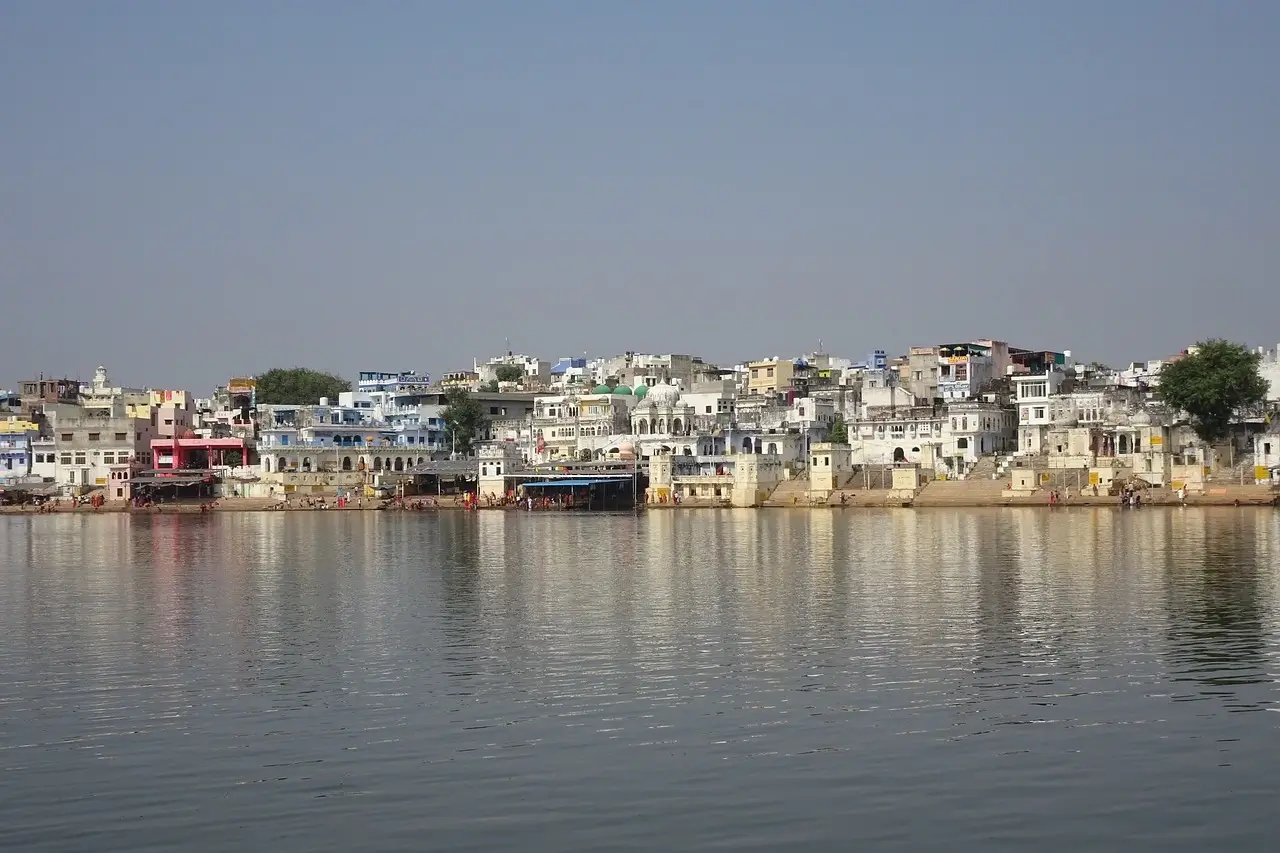
Pushkar, a small town in Rajasthan, India, but it holds a significant place in Hindu mythology. Known for its ancient charm and cultural importance, Pushkar attracts quite a number of tourists and pilgrims annually. According to legend, it was in Pushkar that Lord Brahma, the creator god, descended to defeat a demon named Vajranabha, who was causing great suffering to the people.When the confrontation took place, Brahma struck the demon with a lotus flower, and as the flower’s petals fell to the ground, three sacred lakes were formed, one of which became the famous Pushkar Lake. Considered one of the holiest lakes in Hinduism, it draws pilgrims and tourists alike who come to seek blessings, pay homage, and immerse themselves in its divine waters.
The lake holds a spiritual significance that attracts devotees fromfar and wide. Another legend regarding the creationof this scared lake suggests that Lord Brahma performed a yagna, or sacrificial ritual, on the banks of Pushkar Lake to sanctify it. But this legend also depicts an emotional aspect of the events that unfolded. And here comes the twist that when Lord Brahma was supposed to perform the yajna, his wife Savitri, was not present at the ceremony. So he decided and married another woman, Gayatri, to complete the ritual. When this news reached to Savitri, she was as furious as fire. Hence, Savitri cursed Brahma, that he would only be worshipped in Pushkar. This is why Pushkar is one of the very few places in India with a temple dedicated to Brahma.
According to the Padma Purana Lord Rama himself came to this lake to perform the after death ritual(srad) of his late father King Darastha and his other ancestors.
Encircling the lake are 52 bathing ghats, or steps, where devotees come to take a holy dip, believing it will cleanse their sins and bring good fortune. These ghats are bustling with people, especially during the annual Pushkar Camel Fair and on the full moon day of Kartik Purnima, considered the most auspicious time to visit.
Among the ghats, a few hold particular importance:
Varah Ghat: This ghat is associated with Vishnu’s Varaha avatar, the divine boar, and is one of the key spots for performing rituals in Pushkar. Devotees believe that a dip here brings blessings from Lord Vishnu himself. The evening Arti of this ghat is one of the most serene things to witness in Pushkar.
Brahma Ghat: Named after Lord Brahma, this ghat is where he is said to have performed his yagna. Pilgrims believe a ritual bath here invokes blessings directly from the creator.
Gau Ghat: This ghat holds a solemn significance as it’s dedicated to paying respects to departed souls. Prominent Indian leaders, including Mahatma Gandhi and Atal Vihari Bajpai, have had their ashes immersed here, making it a place of remembrance and reverence.
Savitri Ghat: Named after Brahma’s first wife, Savitri, this ghat symbolizes her anger and the complex dynamics of the divine family. It is a reminder of the story behind Brahma’s worship in Pushkar alone.
Gayatri Ghat: Dedicated to Brahma’s second wife, Gayatri, this ghat is often visited by devotees who wish to honor her role in Brahma’s sacred ritual.
Aside from the lake, its ghats are a focal point for ceremonies, prayers, and even art. The serene waters and surrounding ghats provide a picturesque setting, especially during sunrise and sunset, when the area comes alive with the sounds of temple bells and devotional songs.
In recent years, renovations have enhanced the ghats’ capacity and infrastructure. Walkways, cleaner surroundings, and well-maintained ghats ensure that pilgrims and visitors experience the lake in all its sanctity.
The reflection of ancient temples on the lake water, coupled with the cultural vibrancy of nearby markets, makes Pushkar Lake a blend of spiritual significance and everyday life. For anyone visiting Pushkar, the lake serves as a place of quiet contemplation and cultural immersion, where each ghat tells a story that has resonated through centuries.